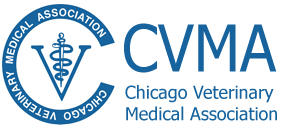Recent news headlines about Oprah’s puppy death from Parvovirus infection have put Chicago’s dog owners on health alert. The Chicago Veterinary Medical Association (CVMA) would like to inform pet owners about this deadly virus and its new CPV-2c variant.
Canine Parvovirus (CPV-2) is closely related to the Feline Panleukopenia virus (also a Parvovirus) and has a high mutation rate. We know of cross species infections (domestic and wild carnivores), which complicates the situation. In the past few years, a new strain, CPV-2c, was introduced to the United States, possibly from Europe, and is becoming prevalent.
Outbreaks of canine parvovirus associated with CPV-2c in the United States were confirmed in 2006 and 2007 in Arizona, California, Georgia, Oklahoma, and Texas. This variant appears to be more potent and deadly. It infects cats as well, causing a disease undistinguishable from Feline Panleukopenia.
According to the American Veterinary Medical Association, the risk for infection with CPV-2c and other variants of the canine parvovirus (as well as many other infectious diseases) is highest when large numbers of dogs are housed together in close confinement, such as boarding/training kennels, shelter facilities, dog shows, and racing greyhound kennels. Dogs of all ages and breeds are susceptible to infection, but puppies and unvaccinated or improperly vaccinated dogs are at higher risk of infection and illness.
Following incubation of three to five days, the most common clinical signs include vomiting, diarrhea and depression. The diarrhea can range from mucoid to bloody. Fast medical intervention is critical as dehydration, toxicity and secondary infections quickly culminate in death.
Parvovirus is highly contagious and can be devastating in kennel and shelter conditions. Viral shedding can occur up to 2 weeks or longer and affected animals should be isolated during this period. Precautions should be taken to prevent spread by means of objects between areas with affected and unaffected animals. Parvovirus is highly resistant to inactivation and can persist in the environment for months to years. Housing, bedding, and other material in contact with affected animals should be thoroughly cleaned with a dilute bleach solution on a regular basis.
Young animals between eight to sixteen weeks of age are most susceptible. Good quality modified live vaccines are still effective against Parvovirus. Vaccination plans may vary individually and your veterinarian will assess your needs. In general, vaccination is done at six to eight weeks, followed by booster vaccinations every three to four weeks thereafter until sixteen weeks of age.
Parvovirus is here to stay and its genetic diversity may adversely affect vaccine efficacy in the future. The Chicago Veterinary Medical Association urges any new dog or cat owner to visit the veterinarian as soon as possible and start a comprehensive health care plan. If you don’t have a veterinarian yet, you can easily find one on the CVMA website at: https://www.chicagovma.org/findavet/.
